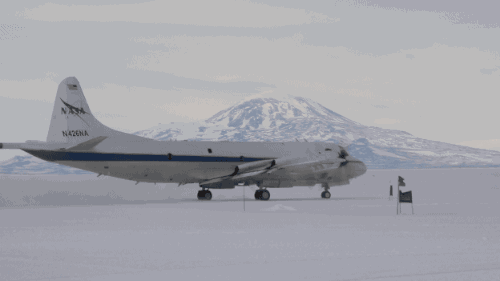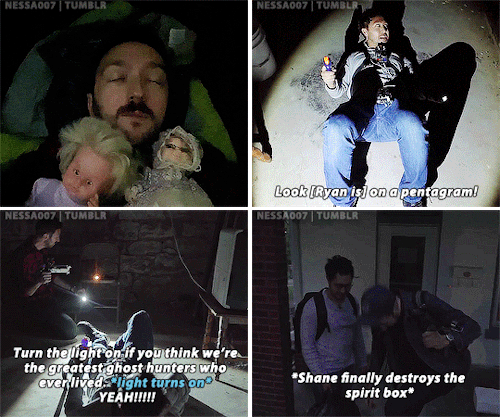2016 Sets Global Temperature Record
2016 Sets Global Temperature Record
We just experienced the hottest year on record…again.

2016 was hotter than 2015, the previous record. And 2015 hotter than 2014, the previous record year.
These record temperatures are all part of a warming trend that dates back to the late-19th century, largely caused by human emissions of carbon dioxide and other gases into the atmosphere.

A lot of this warming trend has been in the last 35 years. In fact, 16 of the 17 warmest years on record have been since 2001.
To help us gather this data, planes and boats travel out from Antarctic research stations to gather information from the Arctic region, in addition to space-based observatories.

Scientists at our Goddard Institute for Space Studies analyze data from 6,300 weather stations, observations of sea surface temperature and Antarctic research stations, all to determine how the average surface temperature is changing.

Scientists at the National Oceanic and Atmospheric Administration separately analyze the same data to track global temperature.
The two agencies reached the same conclusion about 2016’s record-setting heat.
Variations in local weather mean parts of the globe did not experience a record-setting year. Some places still had snow, cold weather and below-record temperatures, but the overall global average was higher than any previous year.

For instance, according to NOAA the average temperature in the 48 contiguous United States was not quite as high as in 2015, which still holds the record.

A combination of space- and land-based measurements gives us a unique perspective on Earth, the only planet we know of that supports life.
To learn more about the global temperature record or see how average surface temperature for individual months, visit: http://data.giss.nasa.gov/gistemp/
Make sure to follow us on Tumblr for your regular dose of space: http://nasa.tumblr.com
More Posts from Insertgeniuspunhere and Others

Tropical the island breeze All of nature wild and free This is where I long to be Happy Earth Day!🌎


does it ever drive you crazy just how fast the night changes
The only Supernatural finale airing on November 19th that matters is Buzzfeed Unsolved Supernatural

Stars Shine Darkly

For diamonds do appear to be, just like broken glass to me
the king (buzzfeed unsolved) is dead, long live the king (watcher entertainment).
What do you call a young musician?
A minor
Eclipse Across America
August 21, 2017, the United States experienced a solar eclipse!

An eclipse occurs when the Moon temporarily blocks the light from the Sun. Within the narrow, 60- to 70-mile-wide band stretching from Oregon to South Carolina called the path of totality, the Moon completely blocked out the Sun’s face; elsewhere in North America, the Moon covered only a part of the star, leaving a crescent-shaped Sun visible in the sky.

During this exciting event, we were collecting your images and reactions online.
Here are a few images of this celestial event…take a look:

This composite image, made from 4 frames, shows the International Space Station, with a crew of six onboard, as it transits the Sun at roughly five miles per second during a partial solar eclipse from, Northern Cascades National Park in Washington. Onboard as part of Expedition 52 are: NASA astronauts Peggy Whitson, Jack Fischer, and Randy Bresnik; Russian cosmonauts Fyodor Yurchikhin and Sergey Ryazanskiy; and ESA (European Space Agency) astronaut Paolo Nespoli.
Credit: NASA/Bill Ingalls

The Bailey’s Beads effect is seen as the moon makes its final move over the sun during the total solar eclipse on Monday, August 21, 2017 above Madras, Oregon.
Credit: NASA/Aubrey Gemignani

This image from one of our Twitter followers shows the eclipse through tree leaves as crescent shaped shadows from Seattle, WA.
Credit: Logan Johnson

“The eclipse in the palm of my hand”. The eclipse is seen here through an indirect method, known as a pinhole projector, by one of our followers on social media from Arlington, TX.
Credit: Mark Schnyder

Through the lens on a pair of solar filter glasses, a social media follower captures the partial eclipse from Norridgewock, ME.
Credit: Mikayla Chase

While most of us watched the eclipse from Earth, six humans had the opportunity to view the event from 250 miles above on the International Space Station. European Space Agency (ESA) astronaut Paolo Nespoli captured this image of the Moon’s shadow crossing America.
Credit: Paolo Nespoli

This composite image shows the progression of a partial solar eclipse over Ross Lake, in Northern Cascades National Park, Washington. The beautiful series of the partially eclipsed sun shows the full spectrum of the event.
Credit: NASA/Bill Ingalls
In this video captured at 1,500 frames per second with a high-speed camera, the International Space Station, with a crew of six onboard, is seen in silhouette as it transits the sun at roughly five miles per second during a partial solar eclipse, Monday, Aug. 21, 2017 near Banner, Wyoming.
Credit: NASA/Joel Kowsky
To see more images from our NASA photographers, visit: https://www.flickr.com/photos/nasahqphoto/albums/72157685363271303
Make sure to follow us on Tumblr for your regular dose of space: http://nasa.tumblr.com










THANK YOU, RYAN BERGARA AND SHANE MADEJ! Buzzfeed Unsolved (2016 - 2021)

If there’s a Stairway to Heaven and a Highway to Hell, it says a lot about the expected traffic.
-
 wingedstudentkingdom liked this · 1 year ago
wingedstudentkingdom liked this · 1 year ago -
 rudytazar70 liked this · 2 years ago
rudytazar70 liked this · 2 years ago -
 eros-military-bujutsu liked this · 3 years ago
eros-military-bujutsu liked this · 3 years ago -
 tmcinla liked this · 3 years ago
tmcinla liked this · 3 years ago -
 aerokiinesis liked this · 3 years ago
aerokiinesis liked this · 3 years ago -
 usafphantom2 reblogged this · 3 years ago
usafphantom2 reblogged this · 3 years ago -
 usafphantom2 liked this · 3 years ago
usafphantom2 liked this · 3 years ago -
 sonia-the-hedgehog-2369 liked this · 4 years ago
sonia-the-hedgehog-2369 liked this · 4 years ago -
 yeougugna liked this · 4 years ago
yeougugna liked this · 4 years ago -
 rcomics123 liked this · 5 years ago
rcomics123 liked this · 5 years ago -
 a-veteran-for-veterans-things liked this · 5 years ago
a-veteran-for-veterans-things liked this · 5 years ago -
 annar139 liked this · 5 years ago
annar139 liked this · 5 years ago -
 reddog1984 reblogged this · 5 years ago
reddog1984 reblogged this · 5 years ago -
 gigasena liked this · 5 years ago
gigasena liked this · 5 years ago -
 medyaper-blog liked this · 5 years ago
medyaper-blog liked this · 5 years ago -
 cherrypop-cherrybomb liked this · 5 years ago
cherrypop-cherrybomb liked this · 5 years ago -
 samlouisepedersen liked this · 5 years ago
samlouisepedersen liked this · 5 years ago -
 moroseville-blog liked this · 6 years ago
moroseville-blog liked this · 6 years ago -
 lastclikc-blog liked this · 6 years ago
lastclikc-blog liked this · 6 years ago -
 hexidecimalhack reblogged this · 6 years ago
hexidecimalhack reblogged this · 6 years ago -
 megaquotesposts liked this · 6 years ago
megaquotesposts liked this · 6 years ago -
 lolimtiredbutok liked this · 6 years ago
lolimtiredbutok liked this · 6 years ago -
 mutato-nomine-music liked this · 6 years ago
mutato-nomine-music liked this · 6 years ago -
 betterlucknextimee liked this · 6 years ago
betterlucknextimee liked this · 6 years ago -
 jellyrae77-blog reblogged this · 6 years ago
jellyrae77-blog reblogged this · 6 years ago -
 thelovingcrownstudent liked this · 6 years ago
thelovingcrownstudent liked this · 6 years ago -
 afrohouseking liked this · 6 years ago
afrohouseking liked this · 6 years ago -
 haunting101 liked this · 6 years ago
haunting101 liked this · 6 years ago -
 findlr1 liked this · 6 years ago
findlr1 liked this · 6 years ago -
 highdrivingsarah liked this · 6 years ago
highdrivingsarah liked this · 6 years ago -
 silviuai-blog liked this · 6 years ago
silviuai-blog liked this · 6 years ago -
 acrylic-pixel reblogged this · 6 years ago
acrylic-pixel reblogged this · 6 years ago -
 arousalworld liked this · 7 years ago
arousalworld liked this · 7 years ago -
 alltohellwemustsail reblogged this · 7 years ago
alltohellwemustsail reblogged this · 7 years ago -
 alltohellwemustsail liked this · 7 years ago
alltohellwemustsail liked this · 7 years ago -
 maryam67-blog liked this · 7 years ago
maryam67-blog liked this · 7 years ago -
 drbob785 liked this · 7 years ago
drbob785 liked this · 7 years ago
